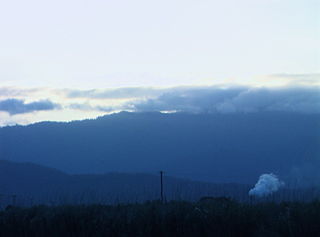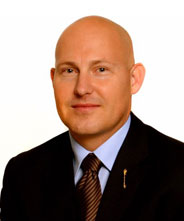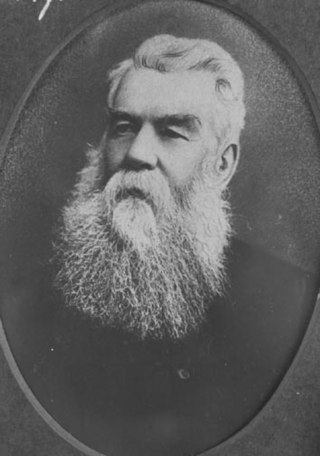
Cairns is a city in Queensland, Australia, on the tropical north east coast of Far North Queensland. The population as of the Census 2021 was 169,312, having grown on average 1.02% annually over the preceding five years. The city is the 5th-most-populous in Queensland, and 15th in Australia.

Gordonvale is a rural sugar-growing town and locality situated on the southern side of Cairns in the Cairns Region, Queensland, Australia. In the 2021 census, the locality of Gordonvale had a population of 6,944 people.

Maytown was the main township on the Palmer River Goldfields in Far North Queensland, Australia. It is now a ghost town within locality of Palmer in the Shire of Cook, having been active from c. 1874 to the 1920s. It was added to the Queensland Heritage Register on 1 June 2004.

Curtis Warren Pitt is an Australian politician who has been a Labor Party member of the Legislative Assembly of Queensland since 2009, representing the district of Mulgrave. On 14 February 2015, he was sworn in as Treasurer of Queensland.

Richard Ash Kingsford (1821–1902) was an alderman and mayor of Brisbane Municipal Council, a Member of the Legislative Assembly of Queensland, Australia, and a mayor of Cairns, Queensland. He is the grandfather of the aviator Sir Charles Kingsford Smith

Stratford is a suburb of Cairns in the Cairns Region, Queensland, Australia. In the 2016 census, Stratford had a population of 1,138 people.

Richard Alfred Tills (1860–1937) was the fourth mayor of Cairns, Australia and the twelfth chairman when Cairns was classified as a borough, a member of the Barron Divisional Board, and president of the Cairns Chamber of Commerce. Born in Kingston upon Hull, England, Tills was a carpenter, architect and one of the pioneers of North Queensland.

Francis Lookout is a heritage-listed cemetery at 157 Dewar Terrace, Corinda, Brisbane, Queensland, Australia. It was built from 1863 to 1966. It is also known as Francis Outlook. It was added to the Queensland Heritage Register on 7 September 2004.

Christ Church Tingalpa and Burial Ground is a heritage-listed former Anglican church at 1341 Wynnum Road, Tingalpa, City of Brisbane, Queensland, Australia. It was built from 1868 to 1993. It is now known as the Pioneer Wedding Chapel. It was added to the Queensland Heritage Register on 2 February 1998.

Kingston Pioneer Cemetery is a heritage-listed cemetery at Bega Road, Kingston, City of Logan, Queensland, Australia. It was built from 1896 to 1941. It was added to the Queensland Heritage Register on 26 May 2000.

Mill Point Settlement Site is a heritage-listed former settlement at Elanda Point at Lake Cootharaba in Como, Shire of Noosa, Queensland, Australia. It was built from c. 1869 to the 1940s. It was added to the Queensland Heritage Register on 6 April 2005.

Clermont Cemetery is a heritage-listed cemetery at Cemetery Road, Clermont, Isaac Region, Queensland, Australia. It was established in 1866. It was added to the Queensland Heritage Register on 6 August 2010.

The Mulgrave Sugar Mill is a sugar mill in Gordonvale, Cairns Region, Queensland, Australia. It commenced operations in 1896. It is operated by MSF Sugar, a subsidiary of the Mitr Phol Group. It is also known as Mulgrave Central Mill.

Andrew Leon was a Chinese-born Australian businessman in northern Queensland, predominantly in the Cairns district. He established the Hap Wah plantation that pioneered the Cairns district sugarcane industry. He was the acknowledged leader of the Cairns Chinese community from the 1870s well into the 1890s.
Carlisle Favell Wordsworth was a member of the Queensland Legislative Assembly.

Tabletop Cemetery is a heritage-listed cemetery is 15 kilometres (9.3 mi) NE of Croydon, Shire of Croydon, Queensland, Australia. It was built from c. 1887 to 1910s. It was added to the Queensland Heritage Register on 13 April 2006.

Croydon Cemetery is a heritage-listed cemetery at Julia Creek Road, Croydon, Shire of Croydon, Queensland, Australia. It was opened c. 1889. It was added to the Queensland Heritage Register on 25 October 2002.

Wrights Creek is a locality in the Cairns Region, Queensland, Australia. In the 2016 census, Wrights Creek had a population of 156 people.

Meringa Sugar Experiment Station is a heritage-listed research station at 71378 Bruce Highway, Meringa, Gordonvale, Cairns Region, Queensland, Australia. It was designed by Goodsir & Carlyle, Baker & Wilde, and the Queensland Department of Public Works and built from 1914 to 1918 by Queensland Department of Public Works. It was added to the Queensland Heritage Register on 18 July 2014.

The Cairns-Mulgrave Tramway was a private tram line from Cairns to the Mulgrave River in Queensland, Australia. It was built until 1897 to serve the Mulgrave Central Sugar Mill, built in 1895. The line, which led through difficult terrain including dense jungle, was built by the Cairns Divisional Board, later renamed Cairns Shire Council, at a cost of £15,319. The line originally ran from Cairns to Nelson, later renamed Gordonvale. In 1898 it was extended to Aloomba, and in 1910 it was finally extended to Babinda, over a length of 50 kilometres (31 mi). The end point in Cairns was between Spence and Bunda Street, adjacent to the Queensland Government's Cairns railway station, with which the line was connected by a short distance.





















